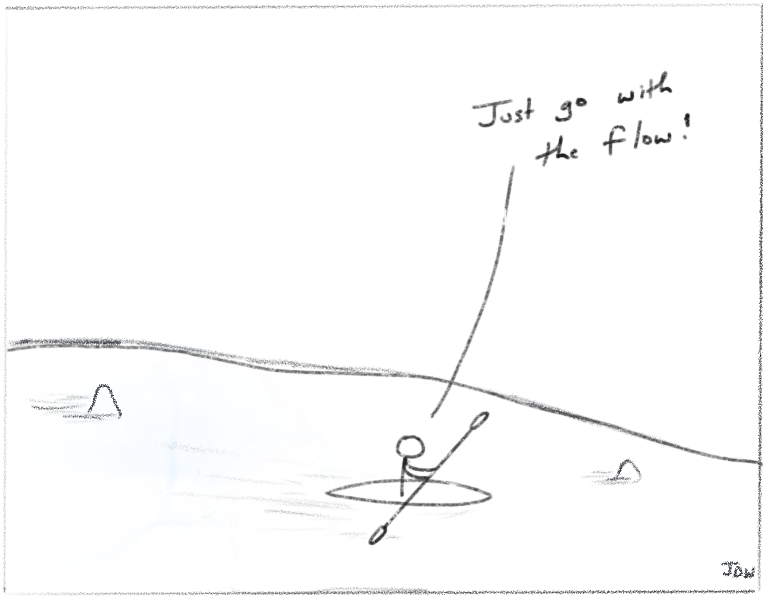I started reading books on time management as a late teenager. One of my first blog posts was about time management! (That, frankly, was embarrassing to re-read – and that means I’ve grown!)
I remember how inspired I felt. I started implementing time management systems and felt like I was figuring it all out.
One book told me to start my day by “eating frogs”.
Another told me to put the big rocks in the jar first, then pebbles, then sand, then water.
Another told me to setup inboxes and work my way to inbox zero.
I tried it all. I was on top of the world. No more procrastinating. I was getting things done, filling my glass jars, and eating those frogs.
The Problem
My time management win streaks wouldn’t last more than a few months. I’d hit a wall, something would fall apart, and before long the system would collapse.
My conclusion at the time, and for years after, was that I just needed to try harder. I needed to exercise more grit, more determination.
There’s something to all that, for sure. It didn’t work for me, though.
As a new husband, I was a few years into my experiments with time management and had just started practicing the pomodoro technique.
My wife called me during a time block to tell me that she was pregnant. I told her that I’d call her back as soon as the time block was done.
I forgot to call her back.
Time Management Today
I don’t practice inbox zero anymore. My jars are unopened on the shelf and the frogs and I are at peace.
I get a lot done, though. What’s different now?
I think differently about time and about life. My personal time management philosophy today is simply:
Go with the flow.
Two Key Lessons
The application of my philosophy is summed up in two key lessons.
- Play to my strengths – What the books didn’t take into account is that we’re all different. That stuff works, it just didn’t work for me.
I like flexibility. I like variety. I don’t like getting pinned down. Time blocking, rigid scheduling, all of that can work great for a lot of folks – it just didn’t work great for me.
I had to get to know myself better and figure out how to play to my strengths. - Design an Operating System – We use operating systems to interact with our computers, our phones, our cars, and, whether conscious or not, we use operating systems to run our lives.
Over the past few years, I’ve invested time figuring out the habits and tools that I need to get things done.
My operating system includes “tiny habits,” a scattered system of electronic and paper notes, and a few pieces of software to keep light track of “projects” that span longer periods of time.
The key for me was doing the work of designing. I learned to get to know my strengths and figure out what works best for me.
Recommendations
I have two recommendations to share based on my experience.
- Use tools to get to know yourself better – The StrengthsFinder tool is a great resource. My personal favorite is the Kolbe A, which contributed to several significant breakthroughs for me in both my overall thinking and approach to time management. Make use of the tools available.
- Design tiny habits to build momentum – Ridiculously small but consistent amounts of progress in the right direction over time is where magic happens. Rather than trying to “fit it all in”, design habits around what’s important to you and build on those. (If you’re curious for some practical examples, check out my (free) book on Tiny Habits)
Managing Time
The great news about time is that we all have the same amount to work with. I’ve noticed that we humans, in general, tend to beat ourselves up about how we use time. It seems to be a fairly universal struggle.
Get to know yourself better.
If you’re in to inbox zero, filling glass jars, or eating frogs – awesome. If not, keep experimenting and design an operating system that works for you.

Leave a Reply